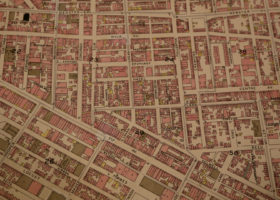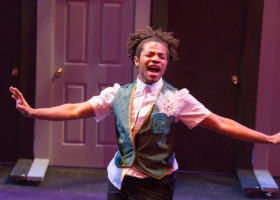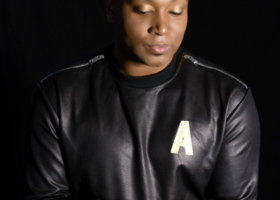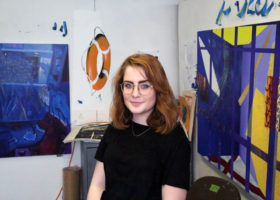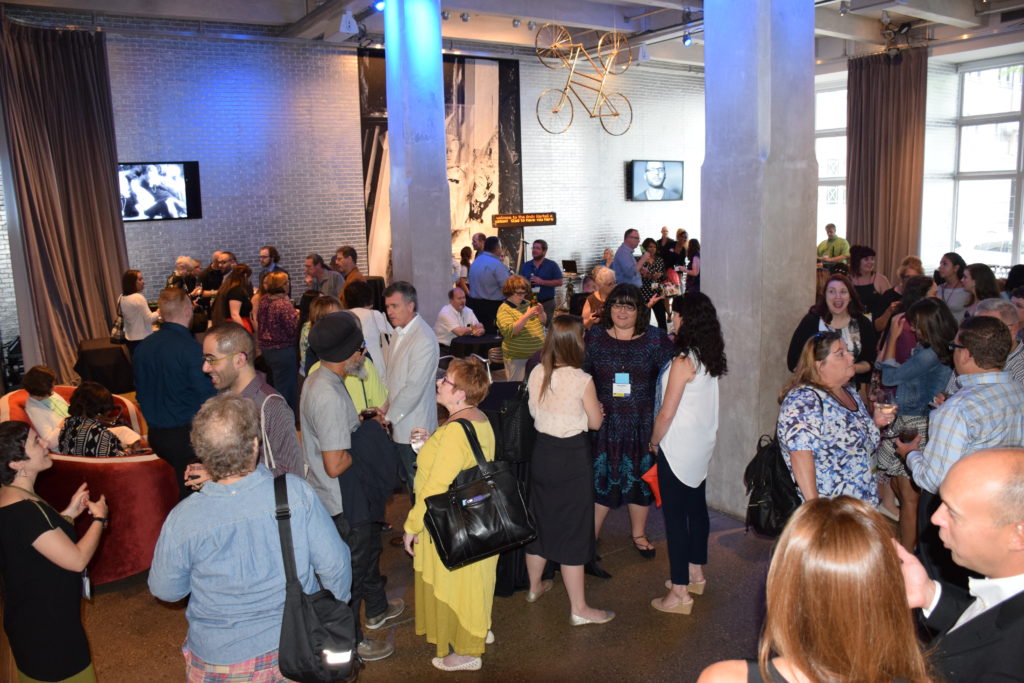
Standing in front of the iconic silk screen, I watched as a group of arts educators gave voice to Andy Warhol’s depiction of four flowers floating above a bed of grass. The red and purple flowers, aching and moaning in pain under a hot sun, we were invited to imagine, were interrupted by the green grass, which delivered a spirited pep talk. “C’mon you guys, I’m here supporting you. Now, it’s up to you to make some effort.” As a fourth player stepped in to “water” them, the purple flower took up the challenge, embodying the can-do attitude of a motivational infomercial.
This interpretive scene at The Andy Warhol Museum was just one moment of the workshop “Developing Multisensory Strategies to Engage All Audiences,” part of the Leadership Exchange in Arts & Disability (LEAD) Conference that was held in Pittsburgh earlier this month. During LEAD, a project created by the Kennedy Center in 2000 and this year hosted by the Warhol, the Children’s Museum, the Pittsburgh Cultural Trust, and the Greater Pittsburgh Arts Council, accessibility experts from museums and theaters around the country convened to share strategies on how to best engage audiences with disabilities in arts and culture. How does a blind person access an art exhibit when touching is not allowed? How can a deaf person enjoy ballet without the music? How can the growing community of people with Autism Spectrum Disorder have a fulfilling museum visit without sensory overload? And what lessons do these experiences have for arts educators developing programming for the larger population?
Over 56 million Americans live with a disability (half of these reporting them to be “severe”), the 2010 U.S. Census found—a figure representing about 20% of the population. According to the United Nations, people living with disabilities would count as the world’s largest minority. And most of us will experience major changes in our visual, auditory, cognitive, or motor functioning during our lifetimes, most likely as seniors. Will we then stop wanting to experience the world? Will we suddenly become uninterested in arts and culture? And when we do want to participate, will we want our disabilities singled out?
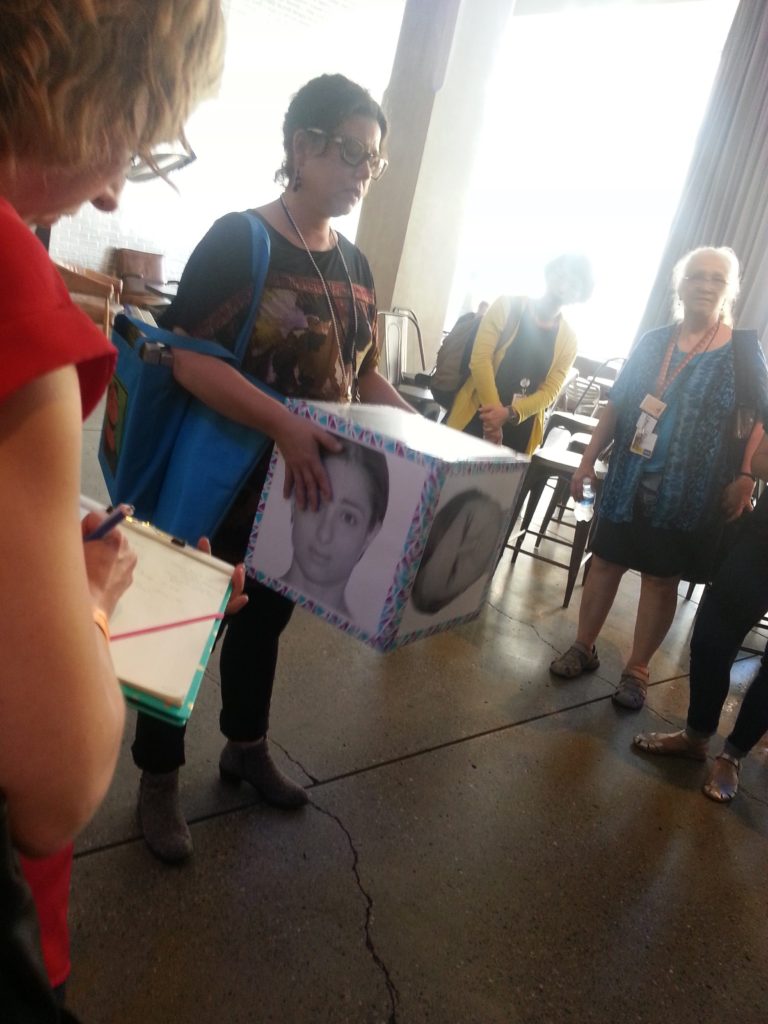
“Overall, there is a trend towards interaction” in museums, Hannah Goodwin, accessibility manager of the Museum of Fine Arts, Boston, said, and to reach audiences with autism or dementia, educators are incorporating improvisational theater into visual art, bringing life to an otherwise silent work like Warhol’s Flowers. Music and dance are powerful tools as well: The Warhol Museum’s school programs coordinator Leah Morelli regularly sings Elvis songs with visitors with dementia when viewing Warhol’s giant Silver Elvises.
Highlighted throughout the LEAD Conference was the concept that arts educators have an entire toolbox of senses at their disposal—and the more senses that visitors are inspired to engage, the more we’re able to appreciate art.
![]()
On a recent visit to the Carnegie Museum of Art, I encountered Bean Garden, an interactive piece by sculptor Alison Knowles in which visitors are invited to plunge hands or feet into a large wooden box filled with dry navy beans. Microphones amplify the rustling of the beans throughout the space. Though a few younger children delighted in the activity, as if in a playground sand box, the exhibit’s docent told me that a third of its visitors are adults.
Because it’s not designed specifically for people with disabilities, Knowles’s sculpture is a perfect example of “accidental accessibility,” according to Gabe McMorland, a presenter at LEAD. McMorland, who is legally blind, also cited the Ai Weiwei sculptures now on display at the Warhol as another good example of accidental accessibility. “His work is so big and stylized,” said McMorland, “that I was able to get up close and experience it even with my patchy vision.”
But the Warhol Museum has been active in designing accommodations specific to visitors with disabilities, and it has gained attention as a local and national leader in this field. Blind and visually-impaired visitors can interact with tactile models of Warhol icons like the Campbell’s soup cans and Marilyn Monroe. This fall, the museum will launch “Out Loud,” an audio guide that interacts with exhibits. While these accommodations were “specifically developed for people with disabilities,” Morelli said, they “also provide entry points that enhance the museum experience for all visitors.” The “Out Loud” audio guide epitomizes universal design. Think of texting or voice to speech—while these technologies are now ubiquitous, they were originally designed with disability in mind.
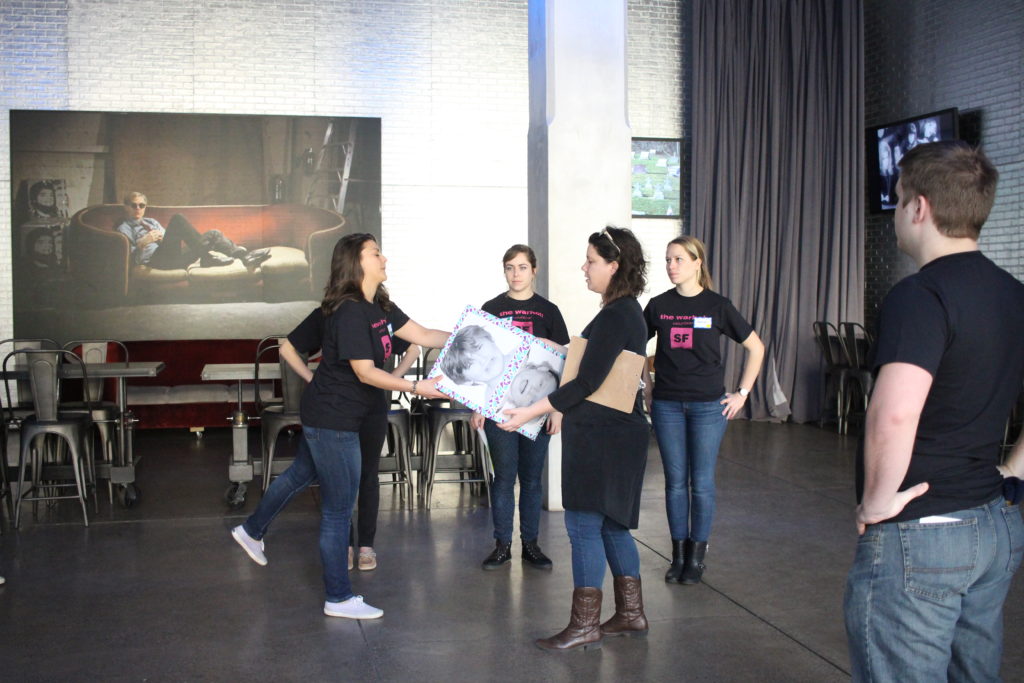
Universal design has a strong presence at the Children’s Museum of Pittsburgh, where almost everything is hands-on. “We’ve reduced the amount of accommodations but kept the essentials, things that everybody can use,” said Carina Kooiman, manager of the Art Studio at the Children’s Museum. Pointing out a visual storyboard that outlines steps for silk screening and a guide for color choices, she explained how these features not only assist people who are deaf or non-verbal, but they also allow children first learning to speak and visitors not fluent in English a way to communicate in the studio.
“The most important [thing] is not the gadget,” continued Kooiman, “but how you train staff. We can’t always anticipate issues or problems in the studio. We encourage staff to problem-solve as needed and create an atmosphere where people are comfortable communicating. At the end of the day, we ask ‘What worked? What didn’t work? Does anyone have any suggestions or ideas?'”
Viv Shaffer, accessibility and inclusion coordinator at Children’s, concurred. “When you think inclusively, you think creatively,” she said, highlighting the unique relationship between accessibility and art. McMorland also weighed in on this topic. “Museums are uniquely prepared to see accessibility as a creative challenge, a design challenge,” he said, “to create an inclusive atmosphere that permeates the entire institution, not just creating ‘special programs’ for people with disabilities in a bubble.”
Navigating among the throngs of kids as I toured the Children’s Museum, I noticed a boy with Down Syndrome pushing a toy. Later, I saw a girl in a wheelchair interacting with an electronic exhibit. Their presence was seamless, no big deal. I was reminded of McMorland’s message of inclusivity and then a quote by Andrew Solomon, from his book Far From the Tree: Parents, Children and the Search for Identity: “People don’t want to be changed or cured or eliminated. They want to be whoever it is that they’ve come to be.”

